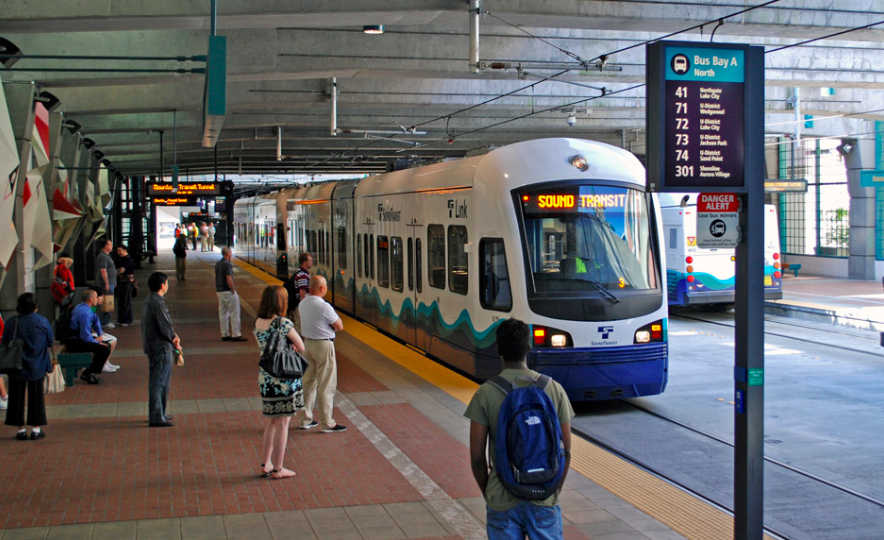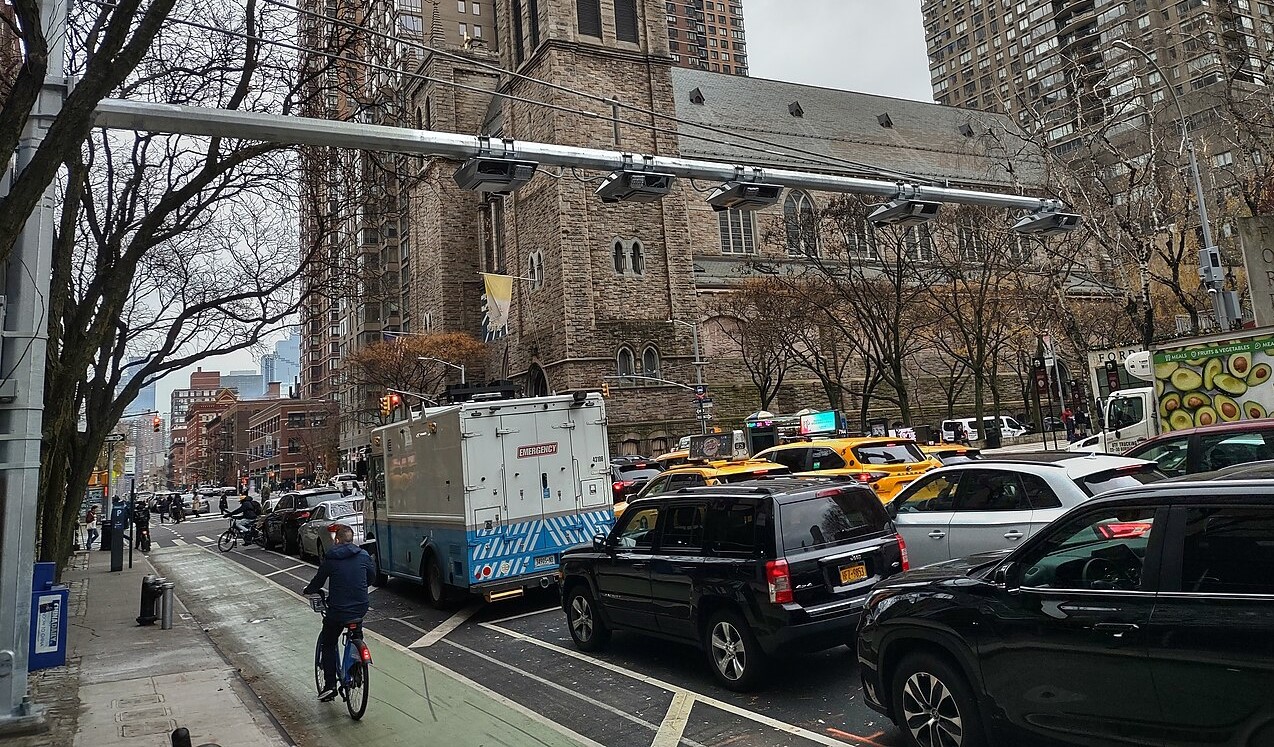An innovative Florida program used tactical urbanism to super-charge the local school bike bus — and transform it into a powerful tool to increase support for permanent infrastructure, which other cities can steal.
University of Miami-based nonprofit BikeSafe found that adding a pop-up bike lane to a long-standing local bike bus at the Coconut Grove neighborhood elementary school actually decreased the number of cars in the school drop-off line by an average of nearly 30 percent over the course of three "Bike to School Day" events between 2023 and 2024.
Bicycle traffic, meanwhile, actually doubled over the same period, as families with multiple kids and parent chaperones joined in on the fun — and as students at nearby private schools took advantage of the opportunity to ride a little safer.
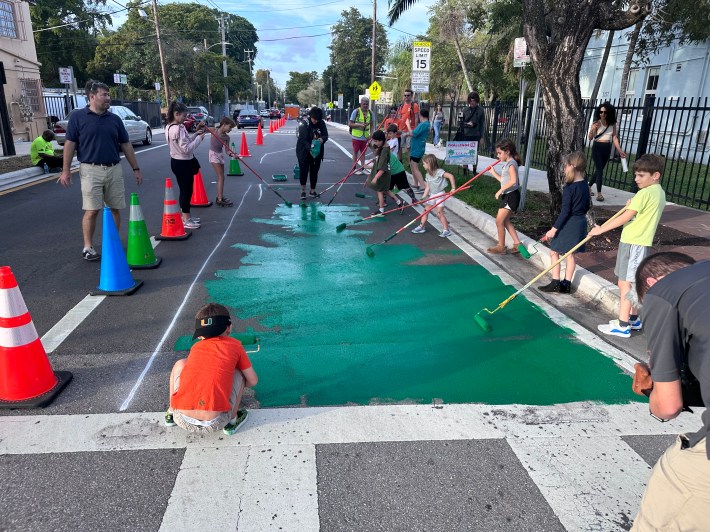
Perhaps most impressively, nearly 77 percent of parents surveyed after the bike bus said they would support the pop-up lane being made permanent — an astounding show of support that ride co-organizer Kurt Kaminer said was "almost at the point of being a miracle" in a largely car-dependent city.
"We realized when we did our first survey with the PTA that it was starting to overcome what we all know as bikelash ... That was huge," added Kaminer, whose case study (with researcher Dr. Mickey Witte) was recently published in the Journal of the American Planning Association.
"That's when we realized that the element of tactical urbanism with the bike bus could be a way of winning hearts and minds."

As America's roads grow more dangerous for people on two wheels, it's not hard to see why parents need a little encouragement to get their kids in the saddle — and a little help understanding why bike infrastructure is a public good worth investing in.
According to the National Household Travel Survey, only 1.9 percent of U.S. students regularly biked or walked to school in 2022, down from 48 percent in 1968 — a negative trend that federal Health Secretary Robert Kennedy cited on page 49 of his first health assessment in a rare point of agreement between him and progressives.
Experts largely blame the collapse of student biking and walking on land-use patterns and housing policies that have massively increased the average distance kids have to travel to the classroom, as well as America's notoriously dangerous drivers and cycling-hostile roads.
Those dangerous roads are part of why BikeSafe — an organization which is directed by neuroscientist and study co-author Dr. Gillian Hotz, and whose mission is to "decrease brain and spinal cord injuries" among youth — has expanded their scope beyond just encouraging individual helmet use and bike safety education to advocate for better infrastructure, particularly along routes that young people are likely to ride.

That campaign found a natural companion in the bike bus, which has proven to be a powerful tool to break car-dependent commute patterns — as evidenced by TikTok celebrity Coach Balto's viral videos of hundreds of happy kids pedaling through the streets of Portland, Oregon.
And while a "Kid-ical Mass" ride doesn't necessarily need a pop-up protected lane to keep participants safe — because of the "safety in numbers" effect, bike buses rarely come into close contact with dangerous drivers, even when they ride on the open road — Kaminer argues that tactical urbanism can get hesitant families to give the bike bus a try, while building support for infrastructure to keep kids safe when they're not surrounded by a swarm of their pedaling peers.
"We'd done bike to school days from a nearby parking lot, where we get approval to close it off a little bit and then ride to school," he adds. "Those events usually didn't have infrastructure tied to them, or any attempts at improving infrastructure. And the numbers for those bike to school days, although they were rather good on those event days, they weren't necessarily sustaining themselves moving forward — and it wasn't necessarily moving the infrastructure needle [long-term]."
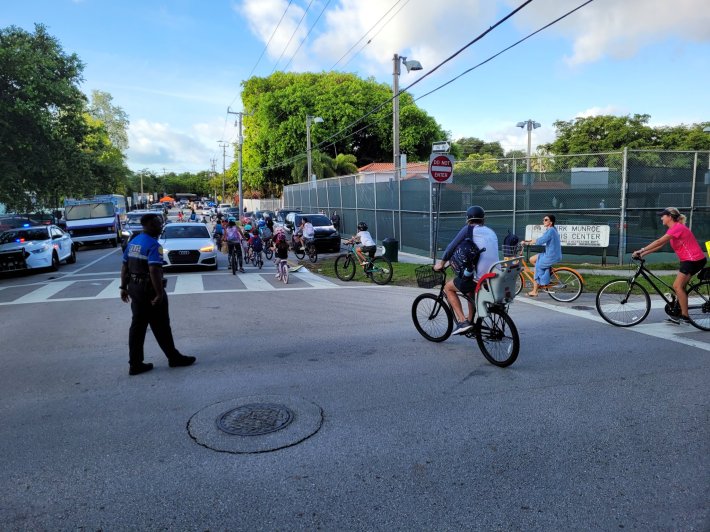
To be fair, Coconut Grove's experiment didn't immediately catalyze a public campaign for a permanent bike path, either — though Kaminer argues that may be because the route was already the safest way into the core business district, which was built before the automobile and remains fairly human-centered today. He also suspects a planned housing development adjacent to the route is making local leaders hesitant to overhaul the street until they've completed traffic studies.
Still, once that housing goes in and unleashes even more little riders on Coconut Grove roads, Kaminer says his study is evidence that the appetite for protected infrastructure will likely remain high — and could get even higher if the bike lane popped up more frequently. If he has any regrets about the event, it's that it couldn't last for longer.
"The event comes and goes so quickly; everybody rides in, the cones go up, and then the cones go down," he added. "[It happens] so quickly that most of the people in the neighborhood weren't even aware that this had happened."
Another shortcoming of tactical urbanist events is can that they take a fair amount of work to put on, like setting out traffic cones, coordinating with the local PTA to schedule events on days that the school district approves of, and rolling out temporary bike lane paint — though in Coconut Grove's case, the kids were more than happy to take part in a fun "painting party" with friends.
It also takes a fair number of adult volunteers to chaperone the kids, as well as to gather up bikes when excited youngsters sling them in the grass and go sprinting off to class — especially when the school has few bike racks, which Coconut Grove doesn't.
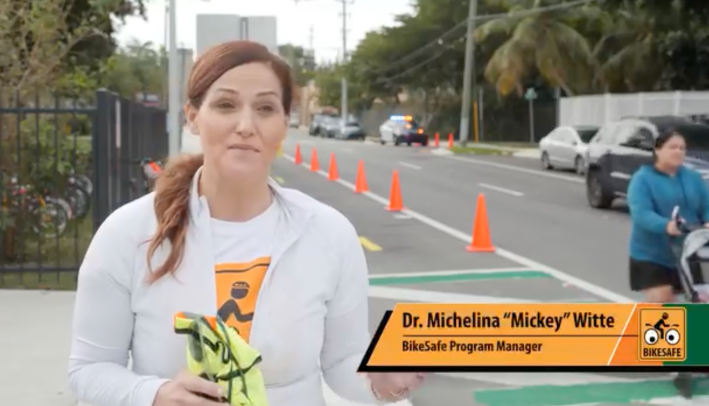
Still, Kaminer argues that all that work is worth it, even if only for the joy students experience in the saddle. At a similar ride his group organized in the historically Cuban enclave of Hialeah, the testimonials he heard were particularly moving.
"One of the youths there said, 'When we were in Cuba, we were able to [bike] every single day. But when we came to the US, we lost that,'" Kaminer adds. "So [the pop-up] was a way to connect with something really good from their home country that they hadn't been able to experience when they came here."
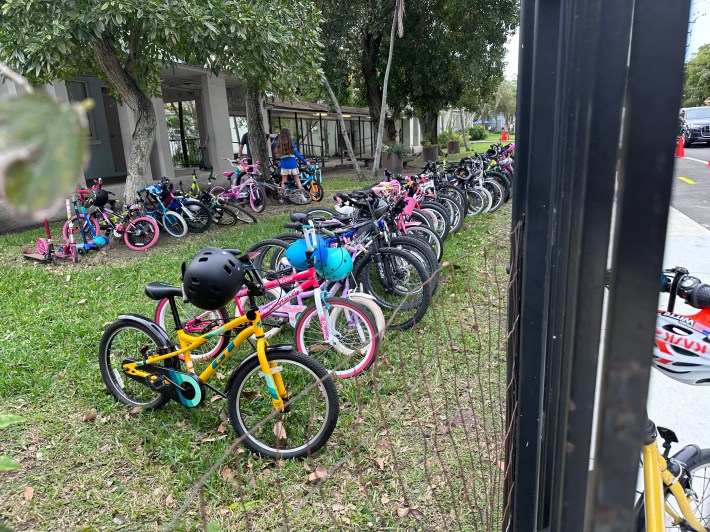
When tactical urbanism and bike buses come together, the roll to school can become a force for lasting change — and a particularly potent way to show people, in real time, that better streets are possible.
"It's super important to make sure that the ideas like 'making a street safer' and 'slowing down cars' or 'restricting cars in any capacity' are actually something that everybody's on board with," he added. "[But when you do a bike bus, people] seem to realize that the trade-offs are worth it — because it's for the kids."


